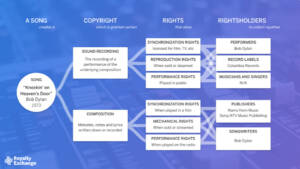The Impact of Streaming Services on the Music Industry

Introduction
Definition of streaming services
Streaming services refer to online platforms that allow users to access and listen to music, podcasts, and other audio content on-demand. These services provide a convenient and affordable way for consumers to enjoy a wide range of music from various genres and artists. With streaming services, users can create personalized playlists, discover new music recommendations, and easily share their favorite songs with others. The rise of streaming services has revolutionized the music industry, transforming the way music is consumed, distributed, and monetized. It has provided artists with new opportunities to reach a global audience and has challenged traditional record labels and distribution models. However, streaming services have also raised concerns about fair compensation for artists and the impact on physical album sales. Overall, streaming services have had a profound impact on the music industry, shaping the way we discover, listen to, and support music in the digital age.
Brief history of streaming services
Streaming services have revolutionized the music industry in recent years. With the advent of platforms like Spotify, Apple Music, and Tidal, music consumption has shifted from physical formats to digital streaming. This shift has had a profound impact on the way music is discovered, consumed, and monetized. The rise of streaming services has allowed for greater accessibility to a vast catalog of music, giving artists the opportunity to reach a global audience like never before. Additionally, streaming services have disrupted traditional revenue models, with artists now relying heavily on streaming royalties as a primary source of income. Overall, the brief history of streaming services has transformed the music industry, creating new opportunities and challenges for artists, record labels, and music consumers alike.
Rise in popularity of streaming services
The rise in popularity of streaming services has revolutionized the music industry. With the advent of platforms like Spotify, Apple Music, and Amazon Music, consumers now have unlimited access to a vast library of songs from various genres and artists. This has significantly changed the way people consume music, as they no longer need to purchase physical copies or download individual tracks. Instead, they can simply stream their favorite songs on-demand, anytime and anywhere. This convenience and accessibility have led to a surge in the number of music streaming subscribers, resulting in a decline in traditional album sales and digital downloads. As a result, artists and record labels have had to adapt to this new landscape by focusing more on streaming revenue and creating exclusive content for these platforms. Overall, the rise of streaming services has had a profound impact on the music industry, transforming the way music is consumed, distributed, and monetized.
Advantages of Streaming Services
Convenience and accessibility
Convenience and accessibility are two key factors that have greatly influenced the music industry with the rise of streaming services. In the past, music lovers had to rely on physical copies of albums or singles, which often required a trip to the store or waiting for delivery. However, with the advent of streaming platforms like Spotify, Apple Music, and Amazon Music, music is now just a few clicks away. This level of convenience has revolutionized the way people consume music, allowing them to instantly access millions of songs from various genres and artists. Additionally, streaming services have made music more accessible to a wider audience, breaking down barriers of cost and location. Whether you’re at home, in the car, or on the go, you can now enjoy your favorite tunes anytime, anywhere. The convenience and accessibility offered by streaming services have undoubtedly transformed the music industry, providing music lovers with unprecedented freedom and choice.
Wide variety of music
Streaming services have revolutionized the music industry by offering a wide variety of music to listeners. Gone are the days when people had to rely on physical copies or limited radio playlists to discover new songs. With streaming platforms, music lovers can explore an extensive catalog of genres, artists, and albums from around the world. Whether it’s the latest chart-topping hits, underground indie tracks, or nostalgic classics, there is something for everyone. This abundance of choices has not only expanded the musical horizons of listeners but has also provided a platform for emerging artists to gain exposure and reach a global audience. The wide variety of music available on streaming services has truly transformed the way we consume and appreciate music.
Personalized recommendations
Personalized recommendations have revolutionized the way we discover and consume music. With the rise of streaming services, algorithms have become our virtual DJs, curating playlists tailored to our unique tastes and preferences. Gone are the days of sifting through endless CDs or relying solely on radio stations to introduce us to new artists. Now, with just a few clicks, we can access a vast library of music and receive personalized recommendations based on our listening history, genre preferences, and even mood. This level of personalization has not only enhanced the music listening experience but has also had a profound impact on the music industry as a whole. Artists now have the opportunity to reach a wider audience, and emerging talents can gain exposure through algorithm-generated playlists. However, personalized recommendations have also raised concerns about the potential homogenization of music and the diminishing role of human curators. Despite these debates, there is no denying the significant influence personalized recommendations have had on shaping the music industry in the digital age.
Disadvantages of Streaming Services
Low artist royalties
Low artist royalties have been a significant concern in the music industry since the rise of streaming services. With the advent of platforms like Spotify and Apple Music, artists have seen a significant decrease in their earnings from music sales. This is primarily due to the low royalty rates offered by these streaming services, which often pay artists only a fraction of a cent per stream. As a result, many artists struggle to make a sustainable income solely from their music, leading to financial challenges and a reliance on other revenue streams such as live performances and merchandise sales.
Impact on physical sales
Streaming services have had a significant impact on physical sales in the music industry. With the rise in popularity of platforms such as Spotify, Apple Music, and Amazon Music, consumers now have easy access to millions of songs at their fingertips. This convenience has led to a decline in the purchase of physical music formats such as CDs and vinyl records. Instead, listeners are opting for the convenience and affordability of streaming services, where they can stream their favorite songs on-demand without the need for physical copies. As a result, record stores and music retailers have seen a decrease in sales, forcing them to adapt to the changing landscape of the industry.
Decrease in album sales
The rise of streaming services has had a significant impact on the music industry, particularly in terms of album sales. With the convenience and accessibility of streaming platforms, consumers are now more inclined to listen to individual songs or curated playlists rather than purchasing entire albums. This shift in consumer behavior has resulted in a decrease in album sales, as artists and record labels now rely heavily on streaming revenue rather than traditional album sales. While streaming services have provided new opportunities for artists to reach a wider audience, the decline in album sales has raised concerns about the sustainability of the music industry and the ability of artists to generate substantial income from their work.
Impact on Music Consumption
Shift from ownership to access
The rise of streaming services has brought about a significant shift in the way people consume music, moving away from traditional ownership models towards a more access-based approach. In the past, music lovers would purchase physical copies of albums or singles, either in the form of CDs or vinyl records. However, with the advent of streaming platforms such as Spotify, Apple Music, and Tidal, music is now readily available at the touch of a button. This shift has not only changed the way we listen to music but has also had a profound impact on the music industry as a whole.
Increase in music consumption
The rise of streaming services has led to a significant increase in music consumption. With platforms like Spotify, Apple Music, and Amazon Music offering unlimited access to millions of songs, music lovers now have the convenience of listening to their favorite tracks anytime, anywhere. This accessibility has not only made it easier for people to discover new artists and genres but has also encouraged them to explore a wider range of music. As a result, the music industry has witnessed a surge in streaming revenue, surpassing traditional sales and becoming the primary source of income for many artists and record labels. Moreover, streaming services have revolutionized the way music is promoted and distributed, allowing independent musicians to reach a global audience without the need for major record deals. Overall, the advent of streaming services has had a profound impact on the music industry, transforming the way music is consumed, discovered, and monetized.
Changing listening habits
Changing listening habits have been greatly influenced by the rise of streaming services in the music industry. With the advent of platforms like Spotify, Apple Music, and Amazon Music, consumers now have access to an extensive library of songs at their fingertips. This has led to a shift in how people consume music, as traditional methods such as purchasing physical albums or downloading individual tracks have become less common. Instead, listeners are now able to create personalized playlists, explore new artists and genres, and discover music through curated recommendations. The convenience and affordability of streaming services have also contributed to the increase in music consumption, as users can enjoy unlimited music without the need for physical storage or expensive purchases. As a result, the music industry has had to adapt to this changing landscape, with artists and record labels focusing more on streaming platforms and digital marketing strategies to reach their audience. Overall, the impact of streaming services on changing listening habits has been significant, revolutionizing the way we discover, consume, and share music.
Impact on Artists and Labels
Changing revenue streams
Streaming services have revolutionized the music industry by completely changing the revenue streams for artists and record labels. In the past, artists relied heavily on album sales and physical merchandise to generate income. However, with the rise of streaming platforms such as Spotify and Apple Music, the focus has shifted towards streaming revenue. This shift has both positive and negative implications for the music industry. On one hand, streaming services provide a wider audience reach and increased accessibility for music lovers. On the other hand, the revenue generated from streaming is significantly lower compared to traditional sales, leading to concerns about fair compensation for artists. Despite the challenges, streaming services have undeniably transformed the way music is consumed and monetized, making it essential for artists and industry professionals to adapt to this new landscape.
Importance of playlist placement
The importance of playlist placement cannot be overstated in the music industry. With the rise of streaming services, playlists have become a powerful tool for artists and labels to reach a wider audience. Being featured on popular playlists can significantly increase an artist’s visibility and exposure, leading to more streams, followers, and ultimately, revenue. In fact, studies have shown that songs included in curated playlists tend to perform better in terms of streams and engagement compared to those that are not. Playlist placement also provides a sense of validation and credibility for artists, as it signifies recognition from industry tastemakers and influencers. As streaming continues to dominate the music consumption landscape, securing playlist placements has become a crucial strategy for artists and labels to succeed in the highly competitive industry.
Emergence of independent artists
The emergence of independent artists has been one of the most significant outcomes of the rise of streaming services in the music industry. With the democratization of music distribution and promotion, independent artists now have the opportunity to reach a global audience without the need for traditional record labels. This has led to a surge in creativity and diversity in the music landscape, as artists from various genres and backgrounds can now showcase their talent and connect directly with their fans. Additionally, streaming services have provided independent artists with valuable data and insights, allowing them to better understand their audience and tailor their music to meet their preferences. As a result, independent artists have gained more control over their careers and have become a driving force in shaping the future of the music industry.
Future of Streaming Services
Competition among streaming platforms
Competition among streaming platforms has significantly transformed the music industry. With the rise of platforms like Spotify, Apple Music, and Amazon Music, artists and record labels now have multiple avenues to distribute and monetize their music. This increased competition has led to a shift in power dynamics, as streaming platforms compete to secure exclusive deals with popular artists and offer unique features to attract subscribers. As a result, artists have more negotiating power and can demand higher royalty rates, while consumers benefit from a wider range of music choices and personalized recommendations. However, this intense competition has also raised concerns about the impact on smaller artists and independent labels, who may struggle to compete with the marketing budgets and resources of major streaming platforms. Overall, the competition among streaming platforms has both positive and negative implications for the music industry, shaping the way music is created, distributed, and consumed.
Technological advancements
Technological advancements have revolutionized the music industry, particularly with the rise of streaming services. These platforms have completely transformed the way we consume and discover music. With just a few clicks, music lovers can access an extensive library of songs from various genres and artists, anytime and anywhere. This convenience has not only made music more accessible to a wider audience but has also opened up new opportunities for artists to reach their fans directly. Additionally, streaming services have provided valuable data and insights to the industry, enabling artists and record labels to better understand their audience and tailor their music accordingly. Overall, the advent of streaming services has had a profound impact on the music industry, shaping the way we listen to and engage with music.
Potential challenges and opportunities
The rise of streaming services has brought both potential challenges and opportunities for the music industry. On one hand, streaming has significantly changed the way people consume music, leading to a decline in physical album sales and digital downloads. This shift has forced artists and record labels to adapt their business models and find new ways to monetize their music. However, streaming services have also opened up new avenues for exposure and discovery, allowing independent artists to reach a wider audience and potentially gain more recognition. Additionally, streaming platforms offer valuable data and analytics that can help artists and industry professionals better understand their audience and tailor their marketing strategies. Overall, while streaming services have presented challenges for the music industry, they have also created exciting opportunities for artists and industry stakeholders to innovate and thrive in the digital age.








